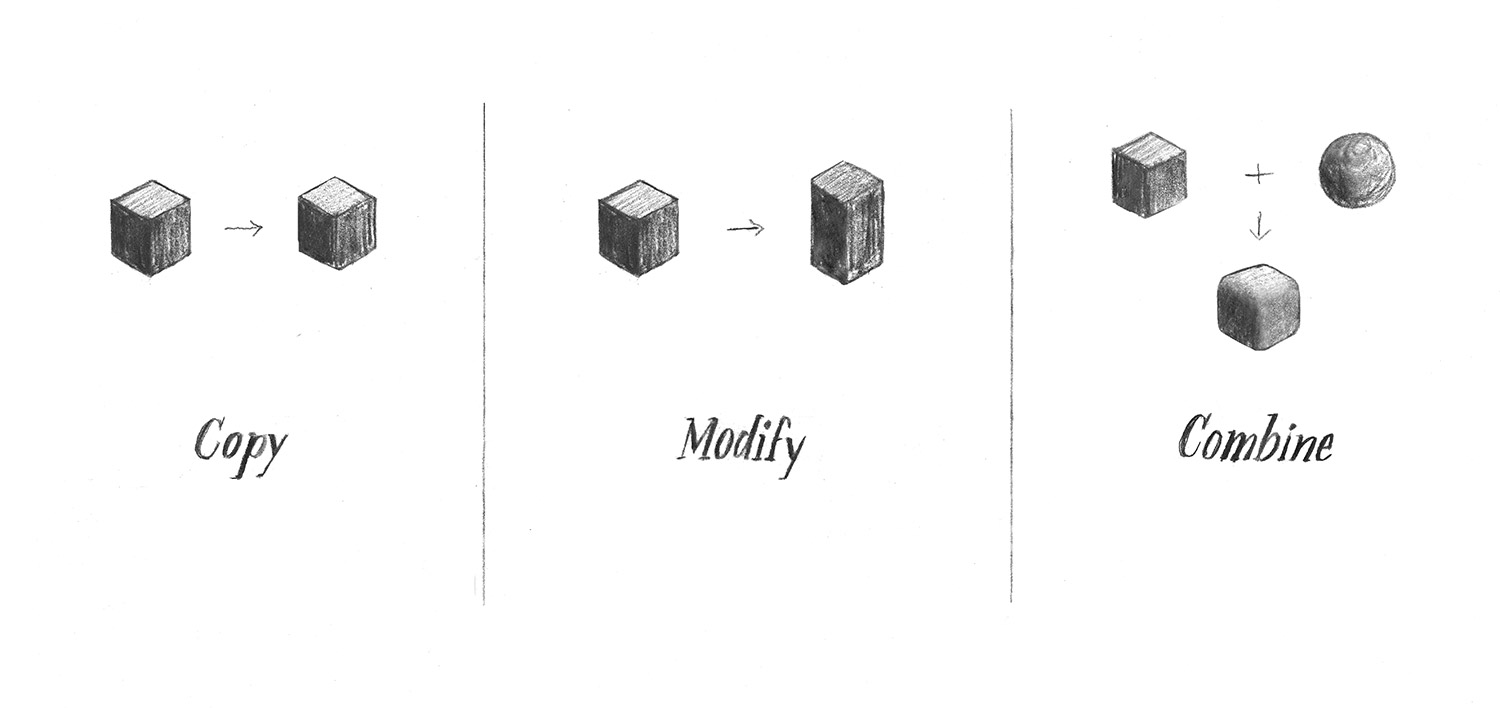Three Basic Ways To Create Lettering
A couple weeks back I wrote a post about observation. After recently watching the documentary Everything is a Remix, it felt right to share this concept described in the beginning of the film.
I'm sure you've heard it before: There's nothing new under the sun. Everything we make and consume is made based on the previous experiences and other creations. However, when I sit down to make a new piece I still feel the pressure to make something brand new that the world has never seen before.
Is it possible to make something brand new? Yes and no. There's only so many ways we can draw letters, and most of them have been done before. I'm going to break down the three basic ways to move past this pressure and make great lettering.
1. Copy
Sorry, did I just say a bad word?
In the design world, there's an unwritten rule that you should never directly copy another person's work. However I don't completely agree with this rule.
There's nothing inherently wrong with copying.
The truth is that we learn an incredible amount through copying the work of experts. The real problem is that people often share the derivative work as their own. That's a whole other topic so I won't get too deep into that.
Here are a few examples of how we learn to be creative through copying:
- Learning from our parents how to walk and talk
- Basic drawing classes teach us to draw from life and study the work of masters
- Practicing calligraphy by referencing time-tested alphabets
When first starting out in lettering (or any creative pursuit really) copying can be a great way to learn. Just be careful not to share it as your own work.
2. Modify
The moment you take something that exists and make it better, you've just innovated and created a new version. A great example is when type designers create a new font based on an old one. The typeface Bodoni alone has been redrawn over and over, with very subtle modifications to improve it.
Again, depending on how much you modify it, it's probably not a good idea to share the work without crediting the original maker.
3. Combine
Combination is taking two unrelated things and mashing them together. By far this is the most creative, and of course, the most challenging of the three. We don't have to reference things directly in order to modify or combine them. In fact, this combination often occurs between two ideas bouncing around in our brains.
When I asked my mentor, John Langdon, about how he discovered ambigrams, he told me that he was really into MC Escher's optical illusion paintings, and he wanted to do the same thing with letters. Again, combining two seeming unrelated things and making something new.
There is no new content, only new context.
Here's the Bottom line. Great work does not come out of thin air. Everything we do and make is influenced by the things that came before, whether we realize it or not. There's no need to put pressure on yourself to make something brand new. Just keep making things, and your work will naturally improve.
Boom. End of blog post.

